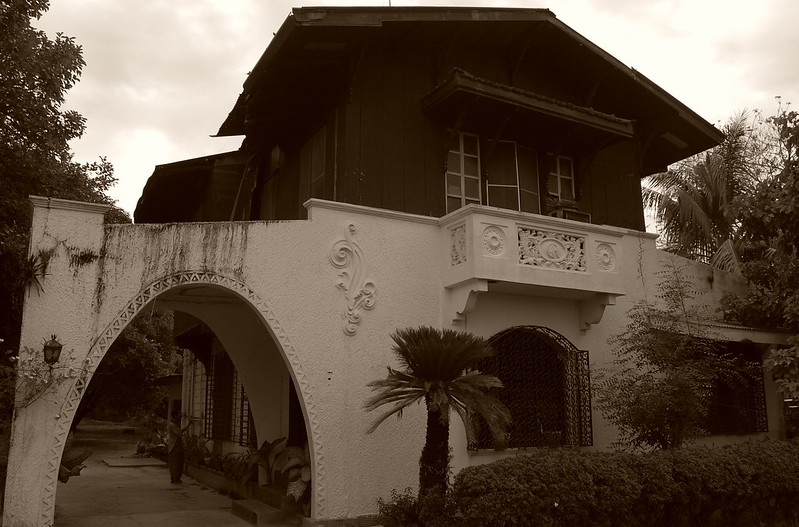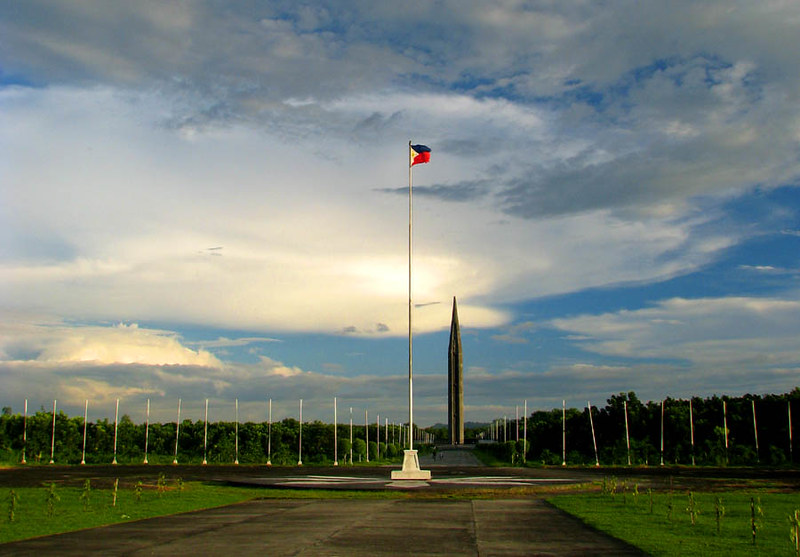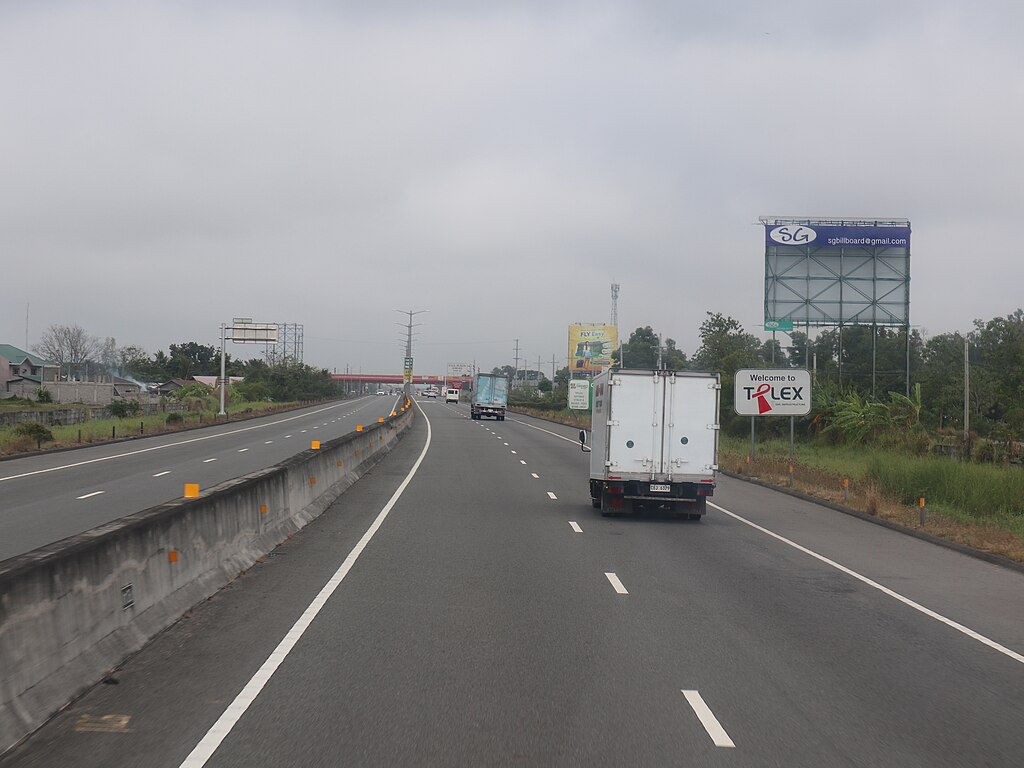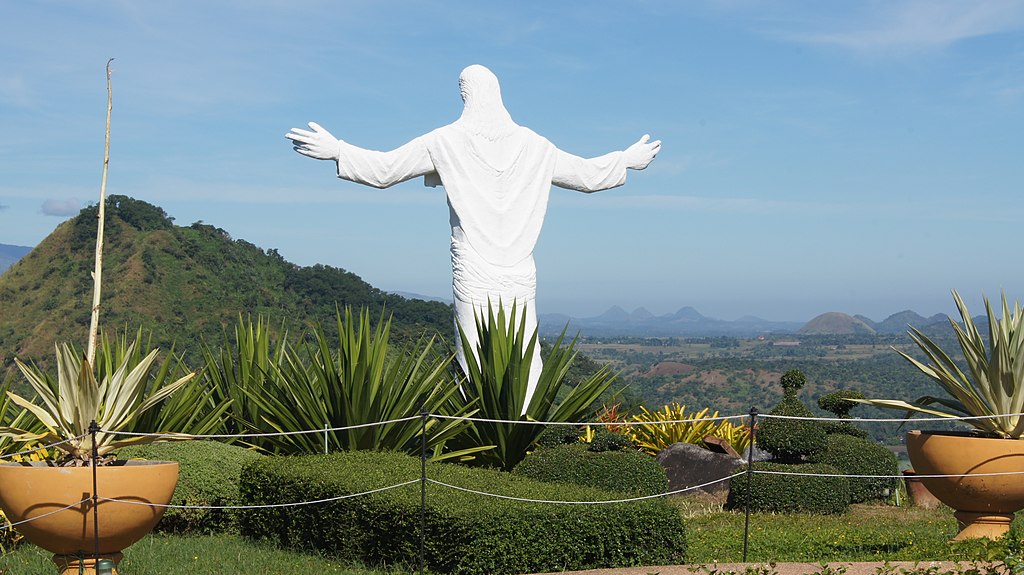Nestled in the heart of Central Luzon, Tarlac Province is a vibrant tapestry woven from the threads of diverse cultures, rich history, and breathtaking landscapes.
As the most multicultural province in the region, Tarlac serves as a microcosm of the Philippines’ unique blend of influences, from the indigenous tribes to the Spanish and American colonial periods.
This article aims to take readers on a journey through Tarlac’s fascinating past, present, and future, exploring its natural wonders, cultural heritage, economic landscape, and the challenges and opportunities that lie ahead.
History

Pre-colonial Era and Early Settlers
Long before the Spanish conquistadors set foot on Philippine soil, the lush forests and rolling plains of Tarlac were home to nomadic Aeta tribes.
These indigenous people, known for their unique culture and deep connection to nature, were the first inhabitants of the region. As lowland settlers from neighboring areas began to migrate to Tarlac, the Aetas retreated to the mountains, preserving their traditional way of life.
Spanish Colonial Period and the Creation of Tarlac Province
In 1874, during the Spanish colonial era, Tarlac was officially established as a province, carved out from portions of Pampanga and Pangasinan.
The town of Tarlac, which would later become the provincial capital, had already been serving as a military outpost tasked with defending the area from Aeta raids.
As the Spanish influence grew, so did the town’s importance as an administrative and economic center.
Tarlac’s Role in the Philippine Revolution
Tarlac played a significant role in the Philippine Revolution against Spain in the late 19th century. The province was among the first to rise up against the colonial rulers, with local heroes like Francisco Makabulos leading the charge.
In 1899, Tarlac briefly served as the seat of the first Philippine Republic under General Emilio Aguinaldo before the capital was moved to Nueva Ecija.
American Colonial Period and Notable Events
As the Spanish ceded control of the Philippines to the United States following the Spanish-American War, Tarlac found itself under a new colonial power.
During this period, the province witnessed several notable events, such as the establishment of the Philippine Independent Church in Paniqui and the creation of Camp O’Donnell, which would later gain notoriety as a concentration camp during World War II.

Post-Independence Era and Recent Developments
Since gaining independence in 1946, Tarlac has continued to grow and evolve. The province has seen significant improvements in infrastructure, education, and healthcare, as well as a diversification of its economy.
In recent years, Tarlac has emerged as a hub for agro-industrial activities and a popular destination for eco-tourism and cultural exploration.
Geography and Climate

Location and Land Area
Tarlac Province is situated in the central part of Luzon, the largest island in the Philippines. Covering an area of 3,053.60 square kilometers (1,178.62 square miles), Tarlac is bordered by the provinces of Pangasinan to the north, Nueva Ecija to the east, Zambales to the west, and Pampanga to the south.
Topography – Plains, Mountains, Rivers
The province’s topography is characterized by a mix of flat plains, gently rolling hills, and mountain ranges.
The eastern portion of Tarlac is dominated by the Tarlac Plain, a vast expanse of fertile agricultural land fed by the Tarlac River and its tributaries. To the west, the Zambales Mountains rise majestically, providing a picturesque backdrop and a haven for diverse flora and fauna.
Climate and Seasons
Tarlac experiences a tropical monsoon climate, with two distinct seasons: the dry season from November to April and the wet season from May to October. Temperatures remain relatively high throughout the year, ranging from an average of 31°C to 35°C.
The province receives an average annual rainfall of around 2,000 millimeters (79 inches), with the heaviest precipitation occurring during the wet season.
Natural Resources and Environmental Challenges
Tarlac is blessed with rich natural resources, including fertile soil, lush forests, and mineral deposits. However, the province also faces environmental challenges such as deforestation, soil erosion, and water pollution.
Efforts are being made to promote sustainable land use practices, reforestation, and proper waste management to preserve Tarlac’s natural heritage for future generations.
Demographics
Population Size and Growth Rate
As of the 2020 census, Tarlac Province has a population of 1,503,456 people, representing a growth rate of 2.52% from the previous census in 2015. The province’s population density stands at 494 inhabitants per square kilometer (1,278 per square mile), making it one of the more densely populated areas in Central Luzon.
Ethnic Groups – Kapampangan, Pangasinan, Ilocano, Tagalog
Tarlac is known for its rich cultural diversity, with four main ethnic groups calling the province home.
The Kapampangans, originally from Pampanga, make up the majority of the population, followed by the Pangasinenses from Pangasinan, the Ilocanos from Northern Luzon, and the Tagalogs from Southern Luzon. This unique blend of cultures contributes to Tarlac’s vibrant and colorful identity.
Languages Spoken
Given its diverse ethnic makeup, Tarlac is a melting pot of languages. Kapampangan is the most widely spoken language in the province, followed by Ilocano, Pangasinan, and Tagalog. English and Spanish are also spoken by a smaller percentage of the population, a testament to the province’s colonial past.
Religion and Cultural Practices
The majority of Tarlac’s population is Roman Catholic, a legacy of the Spanish colonial era. However, there is also a significant presence of other Christian denominations, such as the Iglesia ni Cristo and the Philippine Independent Church. Tarlac’s cultural practices are a fascinating fusion of indigenous, Spanish, and American influences, as evidenced by its festivals, traditions, and artistic expressions.
Economy

Agriculture as the Primary Economic Driver
Agriculture remains the backbone of Tarlac’s economy, with a significant portion of the population engaged in farming and related activities. The province’s fertile plains and favorable climate make it an ideal location for crop production, particularly rice, corn, and vegetables.
Major Crops: Rice, Sugar, Corn, Vegetables
Tarlac is known as the “Rice Granary of Central Luzon,” with vast expanses of rice fields dominating its landscape.
The province is also a major producer of sugar, with several sugar mills and refineries operating in the area, such as the Central Azucarera de Tarlac. Corn and a variety of vegetables are also widely cultivated, contributing to the province’s agricultural output.
Livestock and Poultry
In addition to crop production, Tarlac has a thriving livestock and poultry industry. Cattle, hogs, and poultry are raised for both local consumption and export to neighboring provinces and regions.
The province’s abundant supply of agricultural by-products, such as rice straw and corn stalks, serves as a cost-effective source of feed for these animals.
Manufacturing and Industries
Tarlac’s economy has been steadily diversifying, with the growth of manufacturing and industrial sectors in recent years. The province has attracted investments in food processing, electronics, and garment manufacturing, creating employment opportunities and stimulating economic growth.
Food Processing
Given its strong agricultural base, Tarlac has naturally developed a robust food processing industry. Several companies have set up operations in the province, producing a wide range of food products, from processed meats and dairy to snacks and beverages.
These businesses not only add value to Tarlac’s agricultural produce but also generate jobs and contribute to the local economy.
Electronics and Garments
Tarlac has also emerged as a hub for electronics and garment manufacturing. The province’s strategic location, coupled with its skilled workforce and competitive labor costs, has attracted both local and foreign investors in these sectors.
Industrial parks and economic zones have been established to facilitate the growth of these industries, fostering technological advancement and economic diversification.
Services Sector
The services sector has been growing in importance in Tarlac, driven by the expansion of trade, finance, and real estate activities. As the province continues to urbanize and develop, the demand for various services, from retail and hospitality to banking and professional services, has increased significantly.
Trade, Finance, Real Estate
Tarlac’s capital city and other major towns have seen a proliferation of commercial establishments, financial institutions, and real estate developments in recent years. Shopping malls, supermarkets, and other retail outlets have sprung up to cater to the growing consumer market.
Banks and other financial service providers have also expanded their presence in the province, supporting the growth of businesses and investments.
The real estate sector has experienced a boom, with residential, commercial, and industrial properties being developed to meet the increasing demand.
Employment and Labor Force
Tarlac’s diverse economy provides employment opportunities across various sectors, from agriculture and manufacturing to services and tourism. The province’s labor force is known for its skills, work ethic, and adaptability, making it an attractive destination for businesses and investors.
The local government, in collaboration with educational institutions and private sector partners, has been implementing programs to further develop the skills of the workforce and match them with the evolving needs of the economy.
Government and Infrastructure
Provincial Government Structure
Tarlac is governed by a provincial government headed by the Governor, who is elected by popular vote every three years. The Governor is assisted by the Vice Governor and the Sangguniang Panlalawigan, the provincial legislative body composed of elected board members from each of the province’s three congressional districts.
The provincial government is responsible for overseeing the overall development and administration of Tarlac, including the implementation of policies, programs, and projects that benefit its constituents.
Transportation Networks – Roads, Expressways, Airports
Tarlac’s strategic location at the heart of Central Luzon makes it a key transportation hub, connecting the region to other parts of the country.
The province is served by a network of national and provincial roads, including the MacArthur Highway and the Tarlac-Pangasinan-La Union Expressway (TPLEX), which facilitate the efficient movement of goods and people.
Tarlac is also accessible by air, with the Tarlac Airport serving as a gateway for domestic flights and private aircraft.

Public Utilities – Water, Electricity, Telecommunications
The provincial government, in collaboration with national agencies and private sector partners, has been working to improve Tarlac’s public utilities infrastructure. The Tarlac Electric Cooperative (TARELCO) is the primary provider of electricity in the province, ensuring a stable and reliable power supply for households and businesses.
Water districts and rural water supply associations manage the distribution of clean and safe water, while telecommunications companies have been expanding their coverage to provide better connectivity and digital services.
Education and Healthcare Facilities
Tarlac places a strong emphasis on education and healthcare, recognizing their crucial role in the overall well-being and development of its people. The province is home to several reputable educational institutions, including Tarlac State University, Tarlac Agricultural University, and a number of private colleges and vocational schools.
These institutions offer a wide range of academic programs, from agriculture and engineering to business and social sciences, equipping students with the knowledge and skills needed to succeed in their chosen fields.In terms of healthcare, Tarlac has a network of public and private hospitals, clinics, and rural health units that provide essential medical services to its population.
The provincial government has been investing in the upgrading of healthcare facilities and the training of healthcare professionals to ensure that quality and accessible healthcare is available to all Tarlaqueños.
Tourism and Attractions
Historical Landmarks
Tarlac’s rich history is reflected in its numerous historical landmarks, which serve as testament to the province’s pivotal role in shaping the nation’s identity. These sites not only offer a glimpse into the past but also provide opportunities for education, reflection, and cultural appreciation.
Monasterio de Tarlac and the Relic of the True Cross
One of the most iconic landmarks in Tarlac is the Monasterio de Tarlac, a Benedictine monastery located in the town of San Jose. The monastery is home to the Relic of the True Cross, a revered religious artifact believed to be a fragment of the cross on which Jesus Christ was crucified. The relic attracts thousands of pilgrims and visitors each year, especially during the Holy Week celebrations.

Aquino Center Museum
The Aquino Center Museum in the town of Concepcion is another must-visit historical site. The museum is dedicated to the life and legacy of the late Senator Benigno “Ninoy” Aquino Jr., a prominent figure in the fight against the Marcos dictatorship.
The museum features exhibits showcasing Aquino’s personal belongings, photographs, and memorabilia, providing insights into his political career and the struggle for democracy in the Philippines.
Camp O’Donnell and Capas National Shrine
Camp O’Donnell, located in the town of Capas, holds a somber place in Philippine history. During World War II, the camp served as a concentration camp for Filipino and American prisoners of war who survived the infamous Bataan Death March.
The Capas National Shrine, built within the camp’s grounds, honors the memory of the thousands who perished during this dark chapter in history. The shrine features a memorial wall inscribed with the names of the fallen, as well as a museum that chronicles the events of the war and the sacrifices made by the prisoners.
Natural Attractions
Beyond its historical sites, Tarlac is blessed with stunning natural attractions that showcase the province’s ecological diversity and breathtaking landscapes. From majestic waterfalls to awe-inspiring mountain vistas, Tarlac offers a wealth of opportunities for nature lovers and adventure seekers.
Waterfalls – Ubod Falls, Bulsa Falls
Tarlac is home to several picturesque waterfalls that provide a refreshing escape from the heat and bustle of everyday life.
Ubod Falls, located in the town of San Jose, is a popular spot for picnics and swimming, with its clear, cool waters cascading down a series of rock formations. Bulsa Falls, situated in the town of San Clemente, is another must-visit destination, known for its multi-tiered structure and the lush greenery that surrounds it.
Mt. Pinatubo Crater Lake Trek
For those seeking a more adventurous experience, the Mt. Pinatubo Crater Lake Trek is an unforgettable journey. The trek involves a 4×4 ride across a lunar-like landscape, followed by a hike to the crater lake formed after the volcano’s eruption in 1991. The stunning turquoise waters of the lake, set against the backdrop of the volcano’s rugged terrain, make for a truly awe-inspiring sight.
Festivals and Events
Tarlac’s vibrant culture comes alive through its various festivals and events, which showcase the province’s unique traditions, arts, and cuisine. These celebrations not only provide entertainment but also foster a sense of community and pride among Tarlaqueños.
Malatarlak Festival
The Malatarlak Festival, held annually in January, is one of Tarlac’s most anticipated events. The festival honors the province’s patron saint, Santo Cristo de Malatarlak, and features colorful street dances, parades, and cultural performances. Participants don elaborate costumes and masks, depicting various aspects of Tarlac’s history and folklore.
Chicharon Iniruban Festival
Another notable festival is the Chicharon Iniruban Festival, celebrated in the town of Camiling. The festival pays tribute to the town’s famous delicacy, chicharon (pork rinds), which is prepared using a traditional cooking method called “iniruban.” The event features cooking competitions, street dancing, and food fairs showcasing the best of Tarlac’s culinary heritage.
Outdoor Activities
Tarlac’s diverse landscapes and natural resources provide a perfect setting for a range of outdoor activities, catering to different interests and skill levels. Whether you’re a thrill-seeker or simply looking to immerse yourself in nature, Tarlac has something to offer.
Trekking and Mountain Biking
The province’s mountain ranges and forest trails are a haven for trekking and mountain biking enthusiasts. The Zambales Mountains, in particular, offer challenging routes and stunning vistas, attracting adventurers from all over the country. Local guides and tour operators are available to assist visitors in exploring these natural wonders safely and responsibly.
Kayaking and Fishing
Tarlac’s rivers and lakes provide excellent opportunities for kayaking and fishing. The Tarlac River, which winds through the province, is a popular spot for kayaking, offering a unique perspective on the surrounding landscapes. Fishing enthusiasts can try their luck at catching native species such as tilapia, carp, and catfish in the province’s numerous water bodies.
Accommodations and Tourist Facilities
To cater to the growing number of visitors, Tarlac has been developing its tourism infrastructure, including accommodations and other tourist facilities. The province now boasts a range
of hotels, resorts, and homestays that offer comfortable and affordable lodging options for travelers. These establishments range from budget-friendly guesthouses to high-end properties, catering to different preferences and budgets.
In addition to accommodations, Tarlac has been investing in the development of tourist facilities such as information centers, rest stops, and signages to enhance the visitor experience.
These facilities provide essential services and information, making it easier for tourists to navigate the province and make the most of their stay.
Local Cuisine and Delicacies
One of the best ways to experience Tarlac’s rich cultural heritage is through its local cuisine and delicacies. The province’s culinary traditions are a reflection of its diverse influences, combining elements from Kapampangan, Ilocano, and Pangasinan cuisines.
Influences from Kapampangan, Ilocano, Pangasinan Cuisines
Tarlac’s cuisine is a delightful fusion of flavors from its neighboring provinces.
The Kapampangan influence is evident in dishes such as sisig, a spicy pork dish, and morcon, a stuffed meat roll. Ilocano staples like pinakbet, a vegetable stew, and bagnet, deep-fried pork belly, are also popular in Tarlac.
Pangasinan’s famous milkfish dishes, such as sinigang na bangus and grilled bangus, are equally cherished by Tarlaqueños.
Notable Dishes and Where to Find Them
Some of Tarlac’s most notable dishes include:
- Iniruban – A traditional method of cooking meat, particularly pork, by simmering it in a mixture of vinegar, garlic, and spices. This dish is a specialty of the town of Camiling and is often served during special occasions and festivals.
- Chicharon Camiling – A variant of the popular Filipino snack, chicharon (pork rinds), that originated in the town of Camiling. What sets this version apart is its distinct flavor and crunch, achieved through a special preparation process.
- Bringhe – A rice dish similar to paella, but cooked with coconut milk and topped with chicken, vegetables, and hard-boiled eggs. This dish is a staple during fiestas and family gatherings.
These dishes and more can be found in local restaurants, street food stalls, and during festivals and food fairs throughout the province.
Food Tourism and Agri-Tourism Potential
Given its rich agricultural resources and unique culinary traditions, Tarlac has immense potential for food tourism and agri-tourism. Visitors can explore the province’s farms, plantations, and food processing facilities to gain a deeper understanding of the local food culture and production methods.
Farm stays and culinary tours can be developed to provide immersive experiences for tourists, showcasing the best of Tarlac’s gastronomic offerings.
Challenges and Opportunities
As Tarlac continues to grow and develop, it faces both challenges and opportunities in various aspects of its society and economy. Addressing these issues and harnessing the province’s potential will be crucial in shaping a sustainable and prosperous future for Tarlaqueños.
Balancing Economic Development and Environmental Conservation
One of the key challenges for Tarlac is striking a balance between economic development and environmental conservation.
As the province continues to industrialize and urbanize, it is essential to ensure that growth is achieved in a sustainable manner, without compromising the integrity of its natural resources.
This requires the implementation of sound environmental policies, the promotion of green technologies, and the active participation of communities in conservation efforts.
Promoting Sustainable and Responsible Tourism
Tourism has the potential to be a significant driver of economic growth in Tarlac, but it must be developed in a sustainable and responsible manner. This involves promoting eco-friendly practices, supporting local communities, and ensuring that the benefits of tourism are distributed equitably.
The province can focus on developing niche tourism products, such as agri-tourism, cultural tourism, and adventure tourism, which showcase its unique assets while minimizing negative impacts on the environment and society.
Improving Infrastructure and Public Services
To support its growing population and economy, Tarlac needs to continually invest in the improvement of its infrastructure and public services. This includes upgrading transportation networks, ensuring reliable water and electricity supply, and enhancing healthcare and education facilities.
By providing high-quality infrastructure and services, Tarlac can attract more investments, create jobs, and improve the overall quality of life for its residents.
Preserving Cultural Heritage and Traditions
As Tarlac embraces modernity and progress, it is crucial to preserve its rich cultural heritage and traditions. This involves safeguarding historical sites, promoting traditional arts and crafts, and encouraging the transmission of cultural knowledge across generations.
By celebrating its diverse cultural roots, Tarlac can foster a strong sense of identity and pride among its people, while also attracting visitors interested in authentic cultural experiences.
Conclusion
Tarlac Province is a true gem in the heart of Central Luzon, offering a fascinating blend of history, culture, and natural beauty. From its diverse ethnic roots and colonial past to its thriving economy and stunning landscapes, Tarlac has something to offer every visitor.
As the province continues to navigate the challenges and opportunities of development, it remains committed to preserving its unique identity and building a brighter future for its people.
This article has provided a comprehensive overview of Tarlac Province, highlighting its key features and attractions. However, the true essence of Tarlac can only be fully appreciated by experiencing it firsthand. Whether you’re a history buff, a nature lover, a foodie, or simply seeking a meaningful travel experience, Tarlac welcomes you with open arms.
As Tarlac looks to the future, there is much to be optimistic about. With its resilient spirit, innovative mindset, and commitment to sustainable growth, the province is well-positioned to become a model of inclusive development in the region. By harnessing its strengths and addressing its challenges head-on, Tarlac can create a brighter tomorrow for all its residents, while also inspiring others to follow its lead.
So why not plan your visit to Tarlac today? Come and discover the many facets of this captivating province, and let yourself be enchanted by its warmth, beauty, and hospitality. Your journey through Tarlac promises to be an unforgettable adventure, one that will leave you with lasting memories and a deeper appreciation for the richness and diversity of the Philippines.




Your comment is awaiting moderation.
I really like looking through a post that will make people think. Also, many thanks for permitting me to comment!